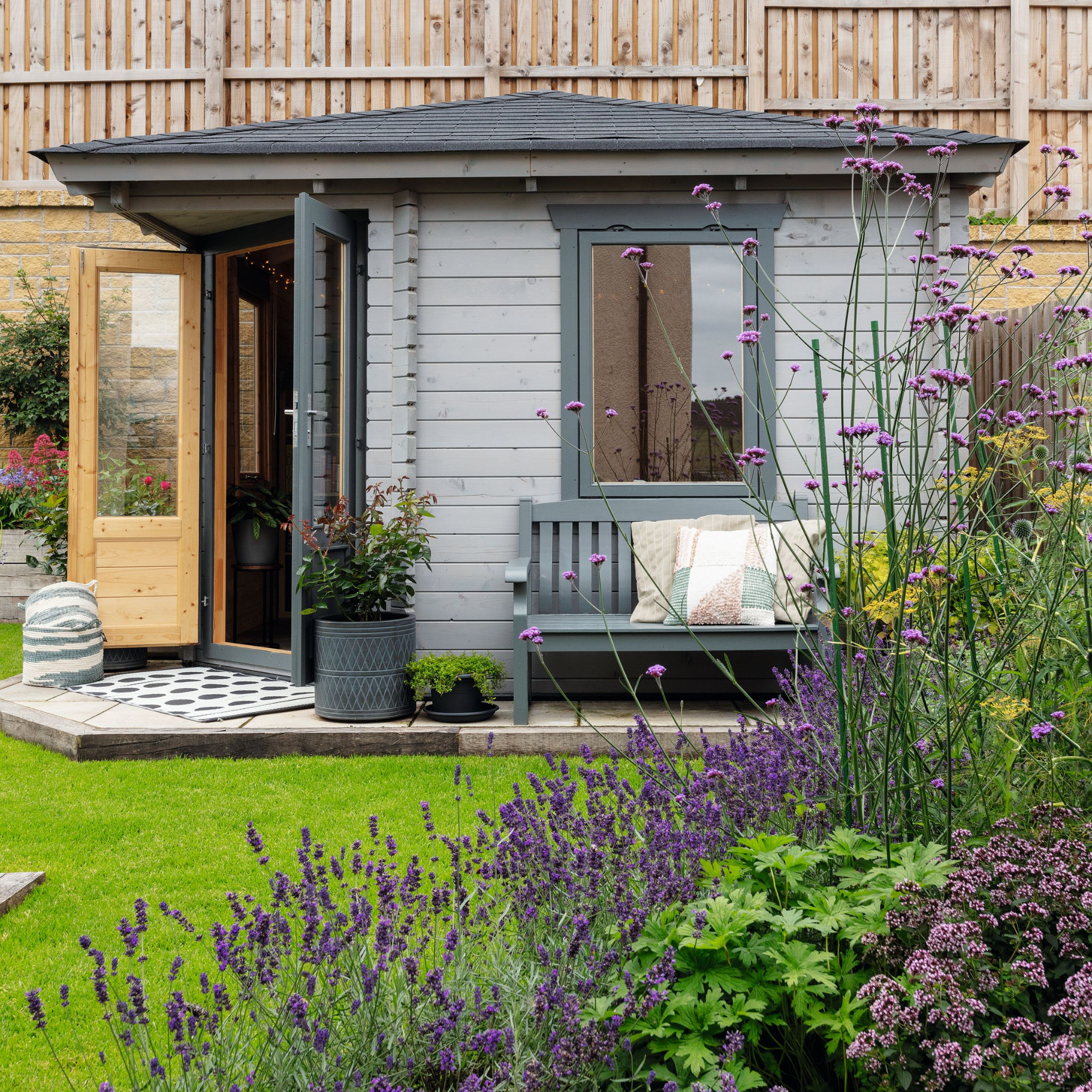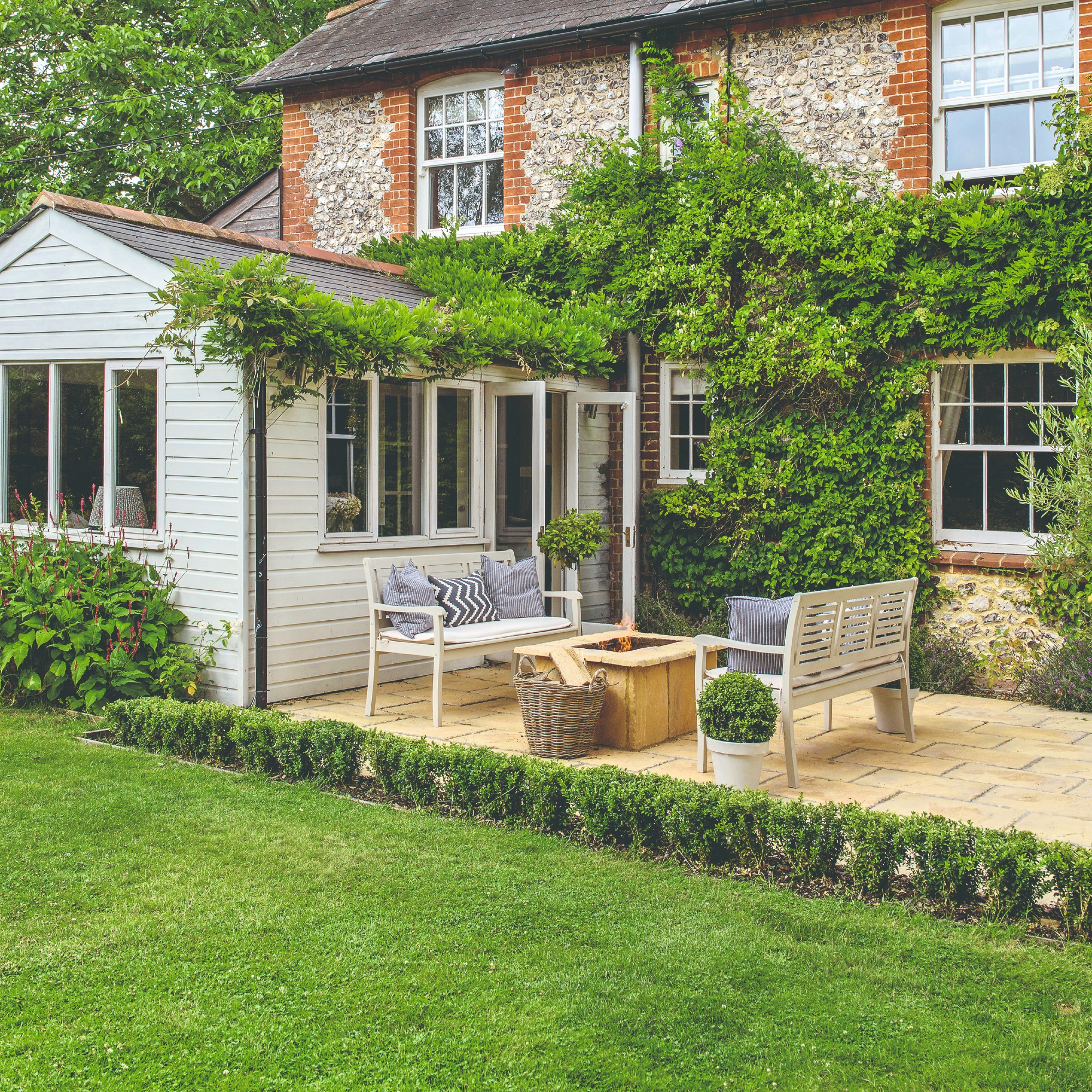How long does grass seed last? Experts urge gardeners to check expiry dates before overseeding their lawns this autumn
Grass seed can quickly ‘go off’ if not stored correctly


If you’re gearing up to overseed your lawn this autumn, you may think you’re saving yourself time and money using a leftover box of grass seed from last year. But before you head to the shed to grab it, you may want to ask yourself: How long does grass seed last?
As you probably already know, one of the best lawn care tips you can have in your back pocket is overseeding your lawn. Doing so can revitalise your lawn both before and after winter and improve its health and appearance. And while it’s not essential, it’s a worthwhile task if you want to invest in your lawn.
If you plan to overseed your lawn this year, worrying about birds eating grass seed may be the only concern that's crossed your mind. But experts are now urging gardeners to double-check the expiration date of their seed and how long grass seed lasts before overseeding their lawns, as time and storage can ruin your efforts before you even start.

Whether you have a small garden or stumbled across a gardening deal you just couldn’t ignore, you may have leftover grass seed sitting in the shed. On paper, this grass seed should last anywhere between 2-3 years.
After that, however, the germination rate will start to slowly decline by around 10% per year, and you’ll find that it won’t be as effective as it once was. But it’s important to note that ‘on paper’ isn’t the same as in reality, as how you store grass seed can also speed up the ageing process.
Neil Donovan, AKA The Bath Gardener, explains, ‘Grass seed does go bad and can lose effectiveness over time, particularly in moist conditions. Basically, it will lose its viability or germination ability.’
It’s worth noting that this timeframe isn’t based on when you purchased the grass seed, though. Chris McIlroy, lawn expert at The Grass People, says, ‘Quality grass seed should have a DEFRA certification label which includes the month and year the bag was sealed and also details on the mixture to make this clear.’
Sign up to our newsletter for style inspiration, real homes, project and garden advice and shopping know-how

Thankfully, there is a way to test if your grass seed has gone bad if you’re worried about this expiry date. The easiest way to do this is to grab a small handful of seeds and add them to a glass of water. Most of them should float if they are in date and ready to use (although you may find that the odd few don’t). If almost all of them sink, however, this is a clear indicator that your grass seed is past its shelf life.
Of course, if you can also see visible signs of mould, decay, or even premature germination while in the box or bag, this is also a sign that your grass seed has gone bad.
How to store grass seed

Proper storage is key if you want to make your grass seed last longer. And while there are many garden storage options out there, they won’t all be suitable for this job. So, here are some top tips:
- Store in a dry place: Humidity and moisture can cause the grass seed to germinate while still in the box or bag. If this happens, it’s highly likely that it will become mouldy or start to decompose before you’ve had a chance to use it. Because of this, it’s always best to buy grass seed in a resealable container. If you can’t find one, pop it in an airtight container.
- Store in a cool place: Grass seed prefers to be stored at a cool temperature to maintain its integrity. Any temperature fluctuations - either too hot or too cold - can lead to decreased viability. That’s why many experts would suggest storing your grass seed in a garage rather than a shed - as it often provides a more consistent temperature.
- Store in a dark place: Too much light can also lead to premature germination, which is why you should always avoid placing grass seed in a bright and sunny location - such as a greenhouse or a conservatory. Instead, store it in a dark place where it will last longer.
- Store off the ground: While you may shove a box or bag of grass seed on the floor, Chris advises against this. He says, ‘Try to keep it off the floor so it doesn’t get damp. On a shelf is ideal but even just a plastic bag laid on the floor would help add a layer of protection.’
Ultimately, properly storing grass seed can make it last longer and keep it viable longer. But you should still aim to use it as soon as possible to make the most of this essential garden product.
FAQs
Will 2 year old seeds germinate?
Yes, 2-year-old grass seeds should still germinate if stored properly. However, if you have stored them in a warm, moist place, you may find that they are less effective than you’d hoped.
Generally, grass seed has a shelf life of 2-3 years, and you shouldn’t have any problems with germination. But this is only the case if you keep your seeds in a cool, dry, and dark location where they won’t prematurely germinate or start to decompose.
Should you cut grass before seeding?
Yes, it’s always a good idea to prepare your grass before seeding. You should always remove any weeds in your lawn, and then give it a good cut. However, it’s best to do this a few days before you plan to seed your grass to prevent stress.
If you have long grass, you can cut it fairly short to give your grass seed the best chance of success. By doing this, you can ensure that your new grass seed doesn’t have to compete for too much sunlight, moisture, or nutrients during this all-important germination stage.
Now you know how long grass seed lasts, it might be time to rethink your grass seed storage.

Lauren Bradbury has been the Content Editor for the House Manual section since January 2025 but worked with the team as a freelancer for a year and a half before that. She graduated with a Bachelor’s degree in English and Creative Writing from the University of Chichester in 2016. Then, she dipped her toe into the world of content writing, primarily focusing on home content. After years of agency work, she decided to take the plunge and become a full-time freelancer for online publications, including Real Homes and Ideal Home, before taking on this permanent role. Now, she spends her days searching for the best decluttering and cleaning hacks and creating handy how-to guides for homeowners and renters alike, as well as testing vacuums as part of her role as the Ideal Home Certified Expert in Training on Vacuums, having spent over 110 hours testing different vacuum models to date!


